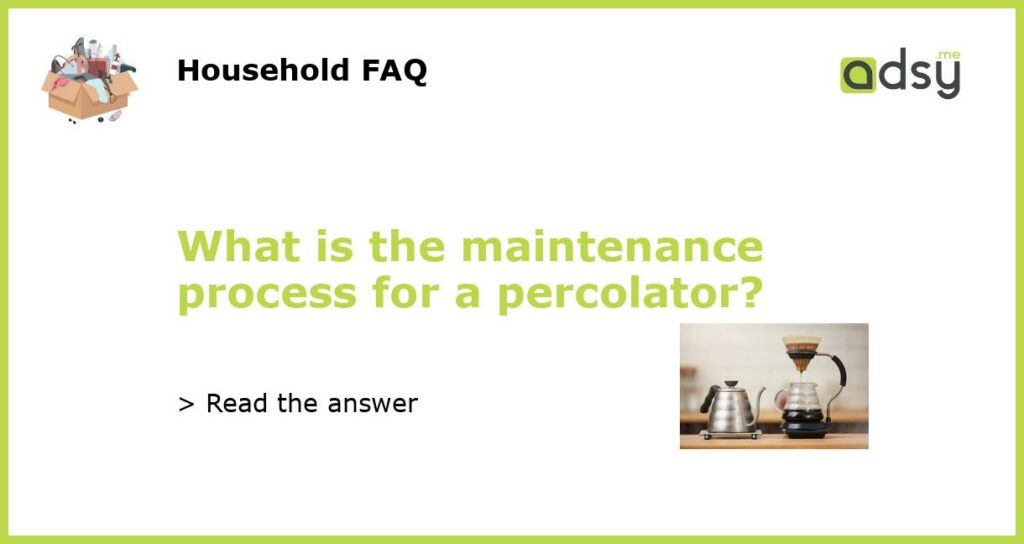Understanding the Percolator
A coffee percolator is a classic device used to brew coffee. It works by passing boiling water through coffee grounds in a basket, allowing the water to absorb the coffee flavor, then cycling it back through. This process repeats until the desired strength is reached, leading to a classic, flavorful cup of coffee. Despite its ease of use, a percolator does require a maintenance process to keep it running perfectly.
Cleaning the Percolator
After every use, the percolator must be cleaned thoroughly to prevent the buildup of residue that can lead to a bitter taste or even damage the device. Start by disassembling the percolator, removing the coffee basket, stem, and cover. Wash each component thoroughly, using a soft brush or sponge to remove any stubborn residue. If the residue proves too stubborn to remove with regular soap and water, try an acidic solution such as vinegar or lemon juice. Ensure to dry the components thoroughly before assembling.
Descaling the Percolator
As with any coffee brewing device, mineral deposits can accumulate over time, affecting the percolator’s efficiency and taste. Descaling the percolator every 1-2 months will keep it in pristine condition. Start by filling the percolator with a mixture of water and white vinegar or citric acid. Set the device to brew and let it run through one or two cycles. Rinse the percolator with clean water.
Checking the Percolator Parts
Every few months, check the percolator for any damaged, corroded, or loose parts. Check the cord for any tears, fraying or broken prongs, and replace and damaged parts. Ensure to keep the percolator away from water, especially the plug.
Storage of the Percolator
When the percolator is not in use, store it in a dry and cool area, away from direct sunlight. Keep in mind that the device has electrical parts, and while storing, ensure that the cord is properly wrapped and protected. Avoid keeping the percolator in an area of high traffic or dampness, such as the kitchen sink, to prevent accidental damage.






